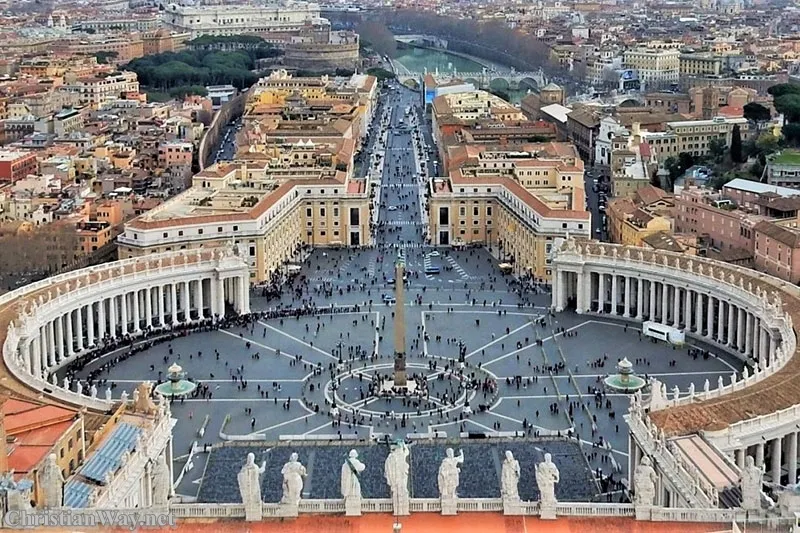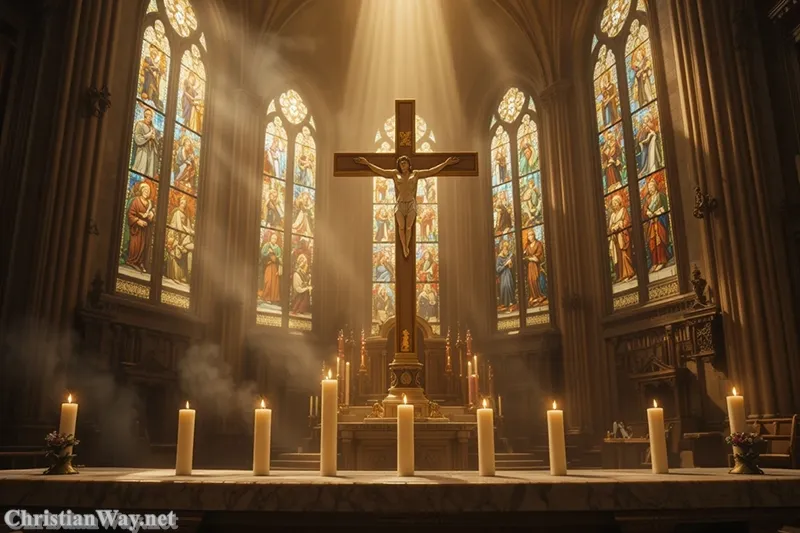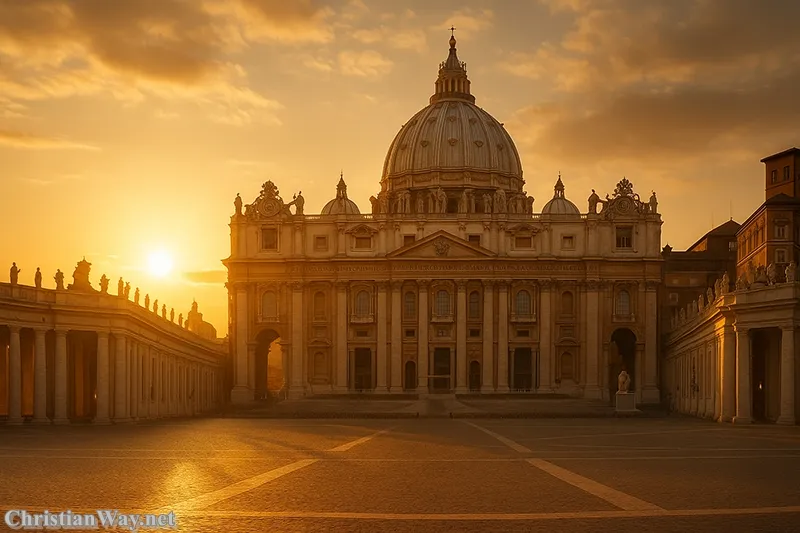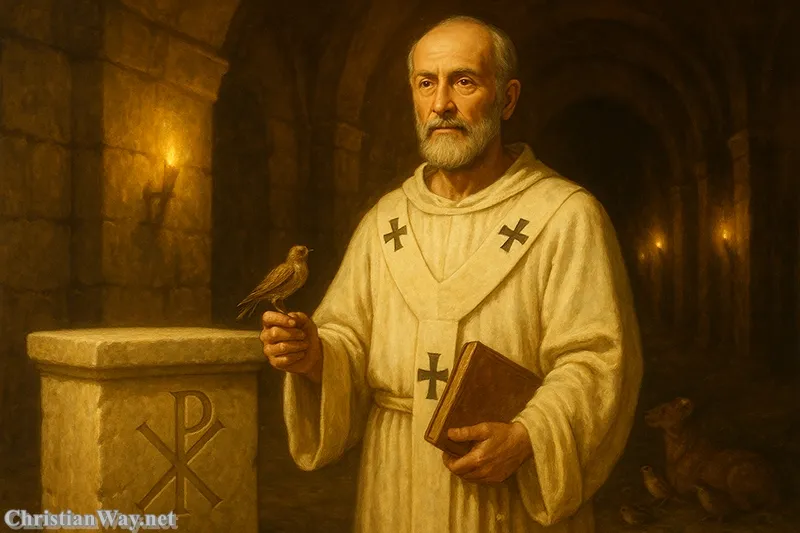Dear friends in Christ,
Every time we gather for the Holy Mass, something far greater than what our eyes can see takes place. Beneath the familiar rhythm of words, gestures, and songs lies the deepest mystery of our faith: the living sacrifice of Christ made present among His people. The Catholic liturgy, especially the Eucharistic Prayer at its center, is not merely a remembrance or ritual—it is an encounter with the eternal love of God, made flesh in Jesus Christ, offered anew for the salvation of the world.
This sacred moment, where bread and wine become the Body and Blood of the Lord, is the summit of Christian worship and the fountain from which all grace flows. It is here that heaven bends low to earth, and the Church—militant, suffering, and triumphant—joins together in one voice of praise and thanksgiving.
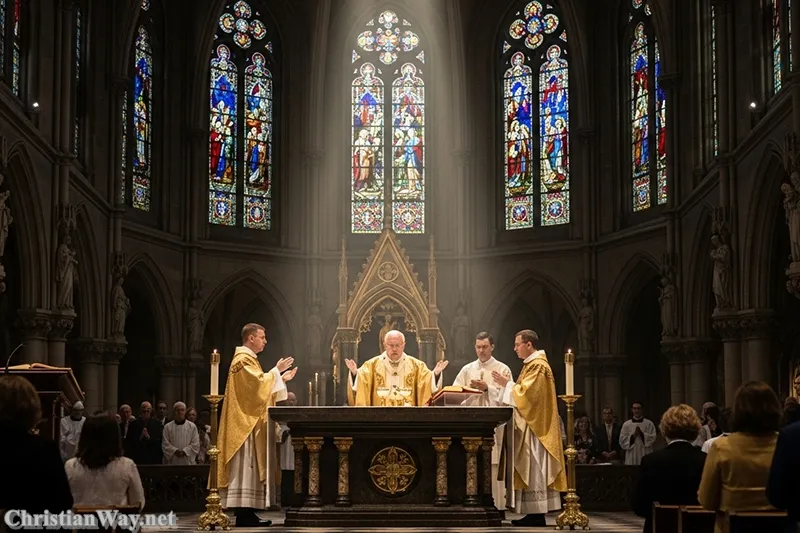
Let us then enter into the mystery of the Catholic liturgy and the Eucharistic Prayer, not as observers but as participants in the divine drama of redemption.
The Liturgy: A Foretaste of Heaven
At the heart of the Catholic faith lies a conviction that worship is not something we invent, but something we receive. The liturgy is not a human performance; it is the work of Christ the High Priest, acting through His Church. The very word liturgy comes from the Greek leitourgia, meaning “the work of the people,” yet in its truest sense it is God’s work for and within His people.
In the liturgy, time and eternity intertwine. What happened once on Calvary is made present—not repeated, but represented—in sacramental form. When we attend Mass, we are not attending a new sacrifice, but being drawn into the one eternal sacrifice of Christ. The Catechism beautifully expresses this truth: “In the liturgy of the Church, it is principally His own Paschal mystery that Christ signifies and makes present” (CCC 1085).
Every gesture of the Mass—from the Sign of the Cross to the final blessing—flows from the mystery of the Incarnation. The liturgy is the Church’s way of living the mystery of Emmanuel, “God with us.”
The Structure of the Holy Mass: A Journey of Faith
The Mass unfolds in two great movements: the Liturgy of the Word and the Liturgy of the Eucharist. These two are not separate acts, but one continuous act of worship. In the first, Christ speaks to us through the Scriptures; in the second, He gives Himself to us as the Bread of Life.
The Liturgy of the Word
Here we listen to the voice of God in Scripture. The readings from the Old and New Testaments remind us of the continuity of salvation history. The responsorial psalm becomes the Church’s song of response to God’s voice. Then the Gospel is proclaimed—the living Word Himself speaking in our midst.
In the homily, the priest breaks open the Word, connecting the divine message to the lived reality of the community. This leads to the Creed, where the faithful together profess their shared faith, and finally to the Prayers of the Faithful, where the Church intercedes for the world.
The Liturgy of the Eucharist
After hearing the Word, we move to the table of the Lord. Here, bread and wine—symbols of creation and human labor—are brought forward and placed upon the altar. Through the prayer and action of the Church, these simple gifts become the very Body and Blood of Christ.
It is within this sacred section that the Eucharistic Prayer takes place, the most solemn and profound moment of the entire liturgy.
The Eucharistic Prayer: The Heartbeat of the Mass
The Eucharistic Prayer is the center and summit of the liturgy. It begins after the Preface and ends with the Great Amen. In these sacred moments, the Church gives thanks to God, recalls the saving works of Christ, and invokes the Holy Spirit to sanctify the offerings and the faithful.
There are four main Eucharistic Prayers commonly used in the Roman Rite today, each with its own history and tone, but all sharing the same essential structure: thanksgiving, epiclesis (calling down of the Holy Spirit), institution narrative, anamnesis (memorial), intercessions, and doxology.
Let us reflect on each element, as one might contemplate the facets of a precious diamond.
1. Thanksgiving and Praise
The Eucharistic Prayer begins with thanksgiving to the Father through Christ in the Holy Spirit. The priest proclaims, “It is truly right and just, our duty and our salvation, always and everywhere to give you thanks.” These words echo the eternal praise of heaven, where the angels cry, “Holy, holy, holy Lord God of hosts.”
Here, the Church joins in that heavenly song—the Sanctus—confessing that the God who is infinitely transcendent is also near, dwelling among His people in the mystery of the altar.
2. Epiclesis: The Descent of the Holy Spirit
The priest stretches out his hands over the bread and wine, invoking the Holy Spirit to sanctify these gifts, that they may become the Body and Blood of Christ. This moment recalls Pentecost, when the Spirit descended upon the apostles, forming the Church.
The transformation that follows is not symbolic but real. By the power of the Holy Spirit and the words of Christ, what was once bread and wine becomes the Real Presence of the Lord. The Catechism affirms: “By the words of Christ and the invocation of the Holy Spirit, the bread and wine become Christ’s Body and Blood” (CCC 1353).
This moment is the meeting point of heaven and earth, where the Spirit renews the face of creation and sanctifies the faithful gathered in faith.
3. The Institution Narrative: “Do This in Memory of Me”
At the heart of the Eucharistic Prayer are the words of consecration. The priest, speaking in the person of Christ, proclaims:
“Take this, all of you, and eat of it, for this is my Body, which will be given up for you…
Take this, all of you, and drink from it, for this is the chalice of my Blood…”
In that moment, the Church is transported to the Upper Room, to the night before Christ suffered. The sacrifice of Calvary is made present; not repeated, but entered into. The Body broken and Blood poured out are now given to us as the food of eternal life.
This is the miracle of love: that Christ, who once offered Himself upon the Cross, now offers Himself again—not in suffering, but in sacramental form—for the nourishment of His Church.
4. The Anamnesis and Offering
After the consecration, the priest recalls the Passion, Resurrection, and Ascension of the Lord. This “memorial” (anamnesis) is not a mere recollection but a making-present of the saving event.
We remember not only what Christ has done but also who He is—our living Savior, who intercedes for us at the right hand of the Father. The Church then offers, through Christ, in the Spirit, the spotless victim back to the Father, uniting our own lives and sacrifices with His.
Here the words of St. Paul resonate deeply: “I appeal to you, brethren, to present your bodies as a living sacrifice, holy and acceptable to God, which is your spiritual worship” (Romans 12:1).
5. The Intercessions
The Eucharistic Prayer expands to embrace the entire Church—those living and those who have gone before us in faith. The priest prays for the Pope, the bishops, the clergy, and all the faithful. He prays for the dead, that through the mercy of God they may rest in peace.
In this communion of prayer, the Church on earth is united with the Church in heaven. The saints are not distant figures of the past but living members of the one Body of Christ. As we pray with them, the Church becomes truly “catholic,” embracing all times and places in one act of worship.
6. The Doxology: “Through Him, With Him, and In Him”
Finally, the priest raises the consecrated Host and chalice, proclaiming:
“Through Him, and with Him, and in Him,
O God, almighty Father,
in the unity of the Holy Spirit,
all glory and honor is yours,
forever and ever.”
The faithful respond with the Great Amen—a word so simple, yet so powerful. It is the Church’s assent to all that has been prayed and offered. In that single word, the whole assembly joins in Christ’s eternal “Yes” to the Father.
The Mystery of Participation
In the Catholic understanding, the liturgy is not a spectacle to watch but a mystery to enter. Each person present is called to active participation—not necessarily through constant speaking or movement, but through interior offering.
When the priest offers the sacrifice, the faithful unite their own joys and sufferings, their work and prayer, with Christ’s offering. This is why the Mass is called both a sacrifice and a banquet: it is the offering of love that becomes communion.
The Second Vatican Council reminded us that “the liturgy is the summit toward which the activity of the Church is directed; at the same time it is the fountain from which all her power flows” (Sacrosanctum Concilium, 10).
The Eucharist shapes the very identity of the Church. Without it, we are scattered; through it, we are gathered into one body.
The Eucharistic Prayer and the Life of the World
To pray the Eucharistic Prayer is to stand at the center of all creation. The bread and wine we bring symbolize not only our labor but the fruit of the earth—creation itself. When these are transformed, the whole world is, in a sense, redeemed and offered back to God.
The Eucharist thus calls us to live eucharistically—to be people of gratitude, sacrifice, and service. Each “Amen” at Mass sends us forth as witnesses of Christ’s love in the world. As we have received His Body, we are called to become His Body for others.
In this way, the Eucharistic Prayer extends beyond the walls of the church. It becomes a prayer that continues in the streets, homes, and hearts of believers. Every act of charity, every forgiveness, every prayer whispered in hope becomes part of that same offering of Christ.
Reflect and Pray
Dear brothers and sisters, the Eucharistic Prayer is the heartbeat of the Church, the moment when heaven kisses earth, and time opens to eternity. Every word, every gesture, every silence carries within it the infinite love of God revealed in Jesus Christ.
When we next hear the priest’s voice lift those sacred words—“This is my Body… This is my Blood…”—let us listen not only with our ears but with our hearts. Let us enter into that mystery with awe and gratitude, knowing that we stand on holy ground.
May our lives, shaped by the Eucharist, become prayers of thanksgiving to the Father, offered through Christ, in the Holy Spirit.
May the peace of Christ dwell richly in your heart, and may His love draw you ever deeper into the mystery of His sacrifice and presence.
— Fr. John Matthew, for Christian Way

